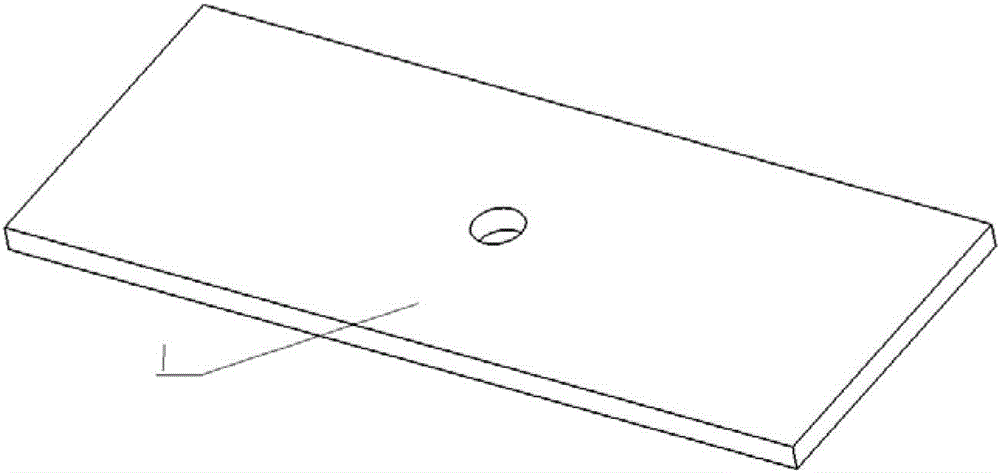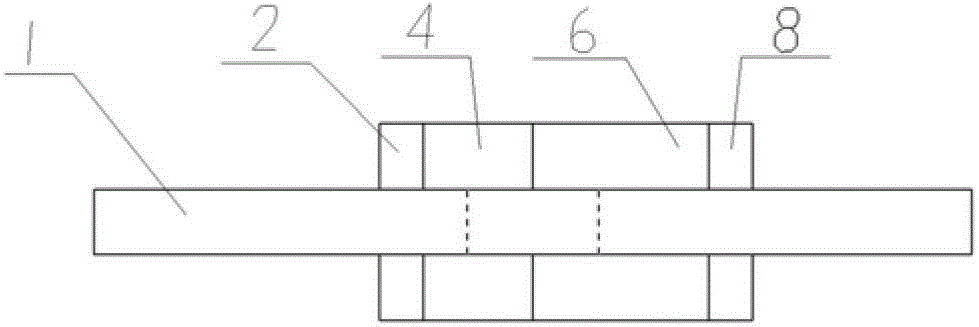A 3D modeling method for hole edge cracks based on finite element software
A finite element and crack technology, applied in the field of damage tolerance analysis, can solve the problems of poor automation, high difficulty of three-dimensional crack model at the edge of the hole, and long time, and achieve the effect of high automation, strong versatility, and clear method steps
- Summary
- Abstract
- Description
- Claims
- Application Information
AI Technical Summary
Problems solved by technology
Method used
Image
Examples
Embodiment 1
[0038] Example 1: Modeling of three-dimensional penetrating cracks on both sides of through-holes
[0039] Taking a rectangular plate with a circular through hole as an example, three-dimensional penetrating cracks are established on both sides of the hole. The size of the rectangular plate is 100×40×3mm, the through hole is located in the center of the rectangle, and the radius is 3mm; the lengths of the penetrating cracks on the sides of the holes are 2mm and 5mm respectively.
[0040] Step 1 Create a structural solid model
[0041] (1) Create a rectangular plate with a length of 100mm, a width of 40mm, and a height of 3mm;
[0042] (2) At the center of the plate, build a cylinder penetrating the plate with a radius of 3mm and a height of 10mm along the direction perpendicular to the plate;
[0043] (3) By applying Boolean operations and subtracting the cylinder from a rectangular plate, a solid model of a rectangular plate with a circular through hole can be established, ...
Embodiment 2
[0063] Example 2: Modeling of three-dimensional penetrating cracks on one side of a spot-faced hole
[0064] Countersink holes are often used as countersunk rivet holes, which are very common in aircraft structures and are a typical variable-section hole. Taking a rectangular plate with a spot-faced hole as an example, a three-dimensional penetrating crack is established on one side of the hole. The size of the rectangular plate is 100×40×3mm, the spot facing hole is located in the center of the rectangle, the hole radius is 2mm, the spot spot radius is 3mm, and the spot spot depth is 1mm; the length of the penetrating crack on one side of the hole is 5mm.
[0065] Step 1 Create a structural solid model
[0066] (1) Create a rectangular plate with a length of 100mm, a width of 40mm, and a height of 3mm;
[0067] (2) At the center of the plate, build a cylinder penetrating the plate with a radius of 2mm and a height of 10mm along the direction perpendicular to the plate;
[...
PUM
 Login to View More
Login to View More Abstract
Description
Claims
Application Information
 Login to View More
Login to View More - R&D
- Intellectual Property
- Life Sciences
- Materials
- Tech Scout
- Unparalleled Data Quality
- Higher Quality Content
- 60% Fewer Hallucinations
Browse by: Latest US Patents, China's latest patents, Technical Efficacy Thesaurus, Application Domain, Technology Topic, Popular Technical Reports.
© 2025 PatSnap. All rights reserved.Legal|Privacy policy|Modern Slavery Act Transparency Statement|Sitemap|About US| Contact US: help@patsnap.com



